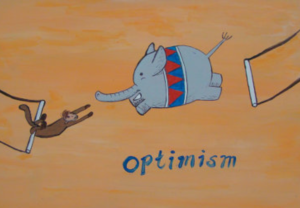 Anyone that has had the opportunity to see, hear, or work with Boston Philharmonic conductor Benjamin Zander knows him to be a person of great energy and optimism. I recently prepared the chorus for him in his conducting of Mahler’s Symphony No. 2, Resurrection. The shear magnitude of learning a score the size of this symphony is a challenge to any conductor, but to observe Zander work with musicians is optimism personified. The challenges are just opportunities.
Anyone that has had the opportunity to see, hear, or work with Boston Philharmonic conductor Benjamin Zander knows him to be a person of great energy and optimism. I recently prepared the chorus for him in his conducting of Mahler’s Symphony No. 2, Resurrection. The shear magnitude of learning a score the size of this symphony is a challenge to any conductor, but to observe Zander work with musicians is optimism personified. The challenges are just opportunities.
In his book The Art of Possibility, Zander tells the story of two shoe salesmen that were sent to a developing nation to study the prospects for expanding business. One sends back a telegram saying, SITUATION HOPELESS-NO ONE WEARS SHOES, while the other writes back with optimism, GLORIOUS BUSINESS OPPORTUNITY-THEY HAVE NO SHOES.
Pursuing innovation with optimism means having the “courage and persistence to distinguish the downward spiral from the radiant realm of possibility in the face of challenge,” and framing the conversations you have with others as well as the ones that take place in your own head in the light of that possibility.
Many contemporary thinkers site the theory of desirable difficulties as an optimistic way to work toward innovation. Desirable difficulties are challenges to our thinking or to our work that would normally appear as obstacles to forward progress. These disadvantages force an individual to adapt and be better prepared against future difficulties. Viewing such challenges as “desirable” is an optimistic view, knowing that challenges only help to sharpen ideas and bolster the resolve to move ahead.
Optimism is not blind hope. It is a belief that there is an idea that will work. Experience has demonstrated over and over that there IS indeed an idea that will emerge and lead to a breakthrough.
When pessimism creeps into the pursuit of innovation, put out that spark of doubt with the belief that an answer will emerge. Believe in the power of “making a way out of ‘no way’ “.


Leave a Reply
You must be logged in to post a comment.